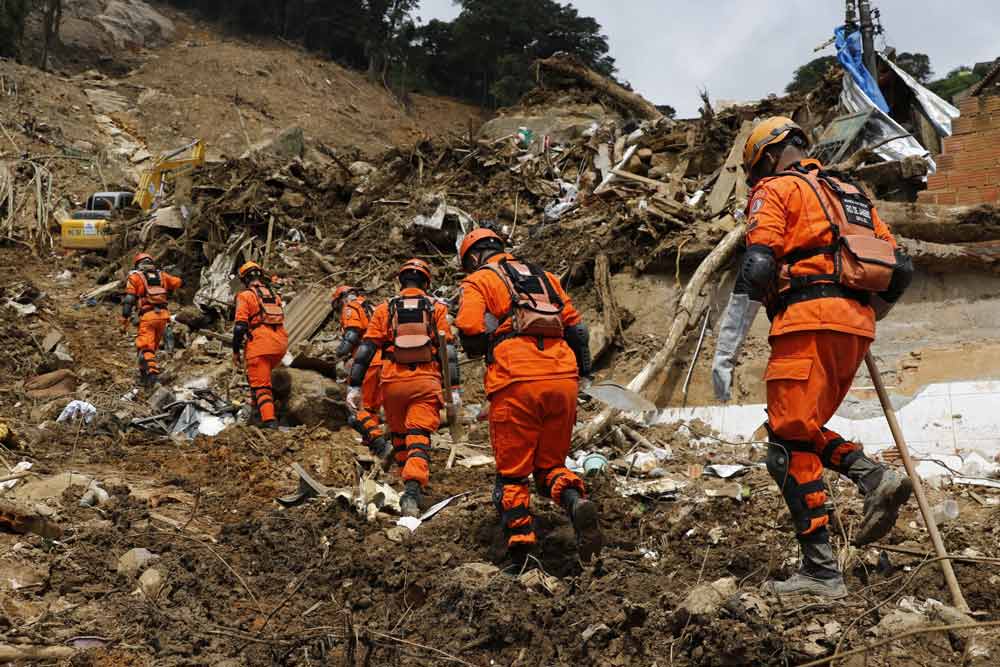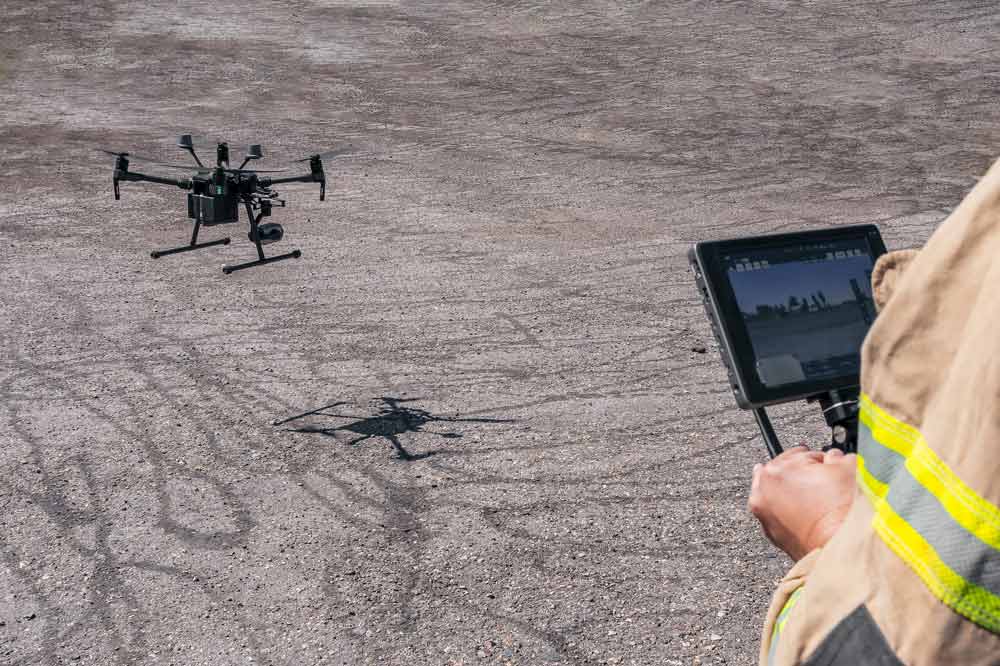Search and Rescue Drones: Supporting Rescue Teams in Critical Situations
Equipped with state-of-the-art technology such as thermal cameras and high-definition optics, these solutions are essential tools for SAR teams. This article looks at how drones help rescue missions by improving rescue teams’ abilities during important times.
The Critical Role of Drones in Modern Search and Rescue Operations
Enhanced Efficiency and Coverage
Drones have dramatically improved the efficiency of SAR missions. With the ability to fly quickly over large areas, drones with thermal cameras can scan and map regions much faster than ground teams. This rapid assessment is crucial in the initial stages of a search and rescue mission. Police drones with thermal cameras can identify heat signatures of humans and animals, even through dense foliage or in the dark. This technology allows SAR teams to locate missing persons accurately and swiftly, increasing the chances of a successful rescue. For instance, search and rescue drones have been used to find lost hikers in remote mountainous regions, significantly reducing search time. Moreover, drones for search and rescue can operate in adverse weather conditions where manned aircraft cannot, ensuring uninterrupted SAR operations.
Accessing Inaccessible Areas
One of the biggest advantages of using drones in SAR is their ability to reach areas that are otherwise inaccessible to humans or traditional machinery. After natural disasters like earthquakes or floods, drones can survey damage and provide critical information to prioritize areas for first responders. They have also been used to deliver supplies to stranded victims, bridging the gap until rescue teams arrive. Search and rescue drones can enter confined spaces, such as collapsed buildings, to search for survivors. Equipped with sensors and cameras, drones can create 3D maps of unstable structures, aiding rescue workers.
Improving Firefighting Rescues
Firefighting drones are crucial in search and rescue missions. These drones can quickly locate and assess fire hotspots, providing real-time data to rescue teams, and improving response times and safety during operations. Their aerial vision delivers precise information and makes them invaluable in coordinating firefighting efforts and rescuing individuals trapped by fire.
Real-Time Data and Communication
Drones provide real-time data, transforming SAR operations. SAR drones with live-streaming cameras and sensors relay information to command centers instantaneously, facilitating informed decision-making and strategic planning. This real-time communication is vital for coordinating multiple SAR teams, ensuring everyone has the latest information. Drones can also serve as temporary communication relays, restoring connectivity in areas where traditional infrastructure is compromised. This was demonstrated after hurricanes, where drones helped re-establish communication networks, facilitating relief efforts.

Advanced Technologies Empowering Search and Rescue Drones
Thermal Imaging and Night Vision
Thermal imaging and night vision are crucial for SAR drones, allowing them to locate individuals based on heat signatures, especially in low visibility conditions or at night. Thermal cameras detect infrared radiation emitted by objects and convert it into an image interpretable by rescuers. This technology is invaluable in scenarios where visibility is hindered by obstacles, darkness, or smoke. For example, drones equipped with advanced thermal imaging technology, also used for law enforcement missions, enable rescuers to detect heat signatures from great distances and through dense cover. This capability is particularly beneficial during nighttime operations or in challenging terrains.
Obstacle Avoidance Systems
Obstacle avoidance systems ensure the safe navigation of SAR drones in complex environments. These systems use a combination of sensors, such as ultrasonic, infrared, and visual sensors, to detect and avoid obstacles. Advanced drones like the DJI Matrice 300 RTK, also used for traffic monitoring missions, are equipped with sophisticated obstacle avoidance technologies that enable them to navigate autonomously around obstacles, ensuring uninterrupted search missions. These systems provide 360-degree coverage, critical for operations in cluttered or unpredictable environments.
Automated Search Patterns and AI Integration
Automated search patterns and AI integration have revolutionized SAR drone missions. AI-powered drones can autonomously plan and execute optimized search patterns for specific terrain and conditions, ensuring thorough and systematic searches. They can adjust their search patterns dynamically, responding to changing conditions and new information, which is also highly useful for event security. Advanced software supports SAR missions by enabling drones to execute autonomous search patterns rapidly, covering areas efficiently and effectively. AI integration also enhances the drone’s ability to detect and identify objects of interest, streamlining the search process.
Real-Life Applications and Success Stories in Search and Rescue Missions

Mountain and Wilderness Rescues
Search and rescue drones have been instrumental in mountain and wilderness rescues, quickly covering large areas and identifying heat signatures. Organizations like the Bay Area Mountain Rescue Unit (BAMRU) have successfully used drones to locate lost hikers in rugged terrains.
Urban and Disaster Response
In urban environments and disaster scenarios, drones assess damage, locate survivors, and provide real-time data to command centers. FEMA’s National Urban Search & Rescue Response System uses drones to assist in structural collapse rescues and disaster reconnaissance.
Water and Flood Rescue Operations
Drones SAR are crucial in water and flood rescues, locating individuals trapped by floodwaters and assessing the extent of flooding. Organizations like the Swiftwater/Flood Search and Rescue (SAR) Team use drones to support boat-based and helicopter-based operations, ensuring timely and safe rescues.
Conclusion about Search and Rescue Drones
The advent of search and rescue drones has ushered in a new era of efficiency and hope in critical rescue operations. Equipped with advanced technologies like thermal cameras, obstacle avoidance systems, and AI integration, these UAVs extend the reach of SAR teams, ensuring timely help in various environments. Embracing and supporting continuous innovation in drone technology is vital for saving lives in critical situations.
Search and Rescue Drones FAQ
What drones do search and rescue teams use?
Drones such as the DJI Matrice 350 RTK are widely used for SAR operations due to their extended flight times, high-resolution cameras, and night vision capabilities.
How much does a search and rescue drone cost?
The cost of search and rescue drones ranges from $1,000 to over $150,000, depending on their features and specifications.
What does a search and rescue drone pilot do?
A search and rescue drone pilot operates drones equipped with advanced technologies, such as thermal cameras, to locate individuals in distress. They provide vital visual data and coordinates, aiding rescue teams in navigating difficult terrains and expediting rescue missions.
What drones have thermal imaging for search and rescue?
Drones like the DJI Mavic 3 Thermal, Matrice 30 Thermal, and Autel EVO Max 4T are known for their thermal imaging capabilities, helping identify heat signatures in environments with limited visibility.
